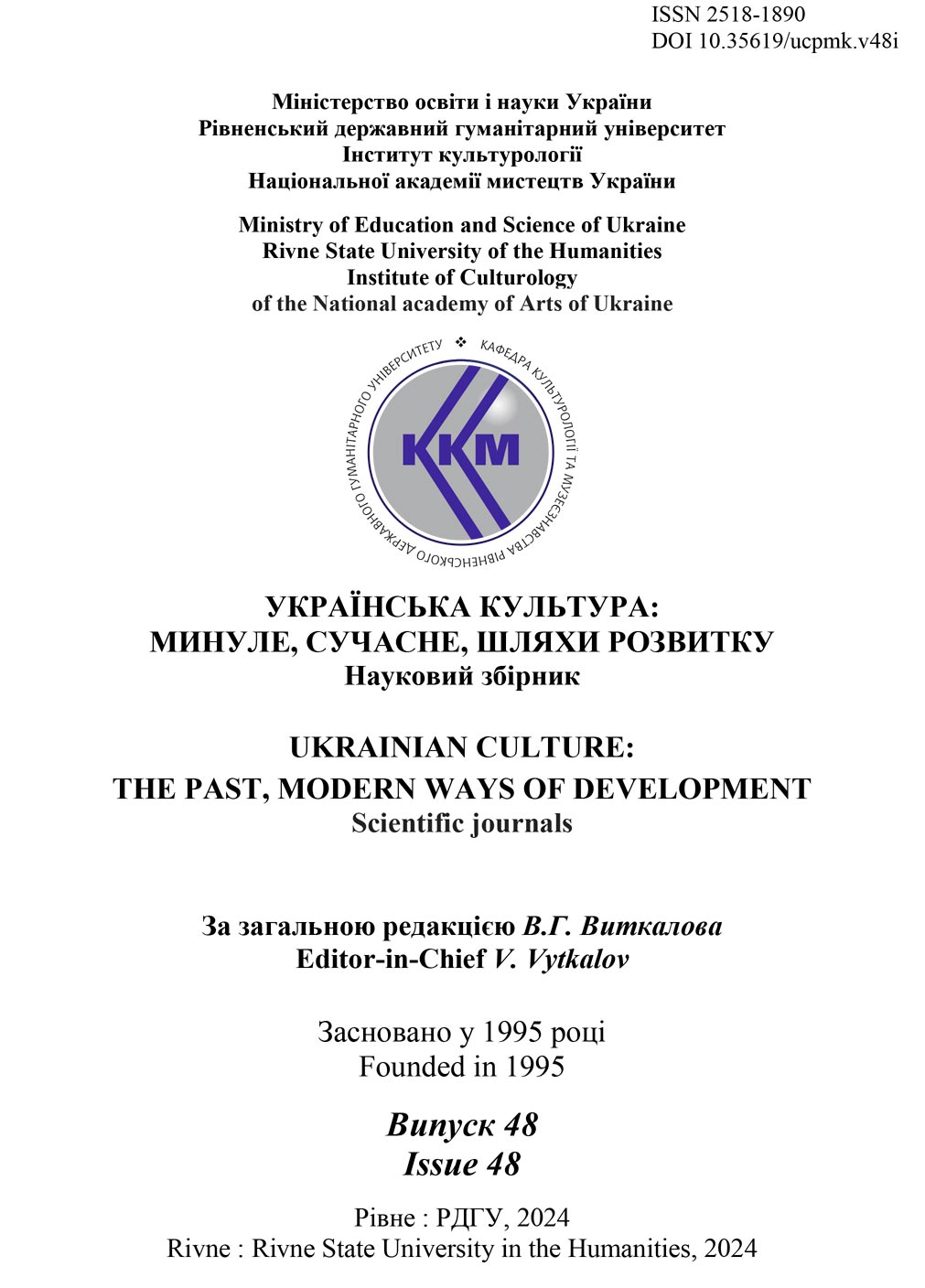DANCES OF DEATH IN THE FINE AND DECORATIVE AND APPLIED ARTS OF EUROPE IN THE 14TH–18TH CENTURIES
DOI:
https://doi.org/10.35619/ucpmk.v48i.745Keywords:
fine art, decorative and applied art, Europe, painting, motif, image of death, 14th–18th centuries.Abstract
The article is devoted to the consideration of the «Dance of Death» motif in European fine art of the 14th – 18th centuries. The origins of the appeal to eschatological motifs in the Romanesque era are outlined, when in 1164, during the transfer of the relics of the Maccabees from Italy to Cologne, the mystery, which was previously called the «Maccabean Dance», was named "Danse Macabre". It is noted that from this period the «conversation with Death», which was performed by 24 actors, began to acquire not only the poetic appearance of a spectacular performance with an instructive and cautionary content, but also to receive permanent expressions in images on the walls of monasteries, walls of temples and cemeteries. In the Middle Ages, visual narratives of this type often contained captions, sometimes of songpoetic content, sometimes with elements of bitter humor, sometimes also notes of melodies for dances of this kind.
The strengthening of religious sentiments among the people was also facilitated by the spread of paintings with a certain motif, as well as book miniatures on a given theme, scenes with Death in wood carvings in the territories of Europe (primarily, Italy, France, Germany, England, Spain) from the late Gothic and Renaissance periods on the territory of
Europe and carpet making. It was found that if at the early stage of the spread of the "Dance of Death" motif, the latter was depicted as an actor of a kind of "nativity scene", which gradually acquired the typical features of a corpse wrapped in a shroud, then since the times of Mannerism, the iconography of the indicated action already included up to 29 pairs of actors mysteries (including 28 dancing non-stop for three days until exhaustion and collapse of couples) and reflected late medieval hysteria against the background of the spread of infectious diseases, the plagues of which affected the psycho-emotional states of groups of people in the squares and streets of European cities. Changes in the plot interpretation
of the «Dance of Death» until the end of the 16th century in fine and decorative arts and their later replicas are visualized.




